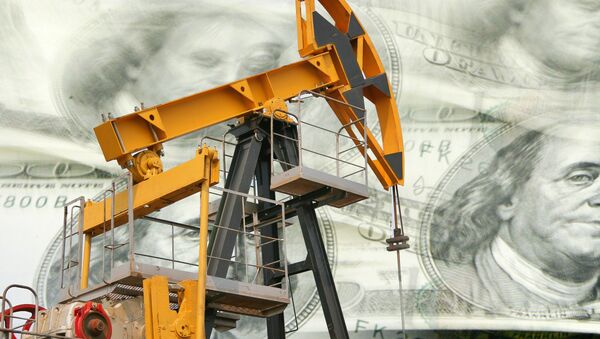MOSCOW. (RIA Novosti economic commentator Oleg Mityayev) - On July 13, the Russian government adopted a basic forecast of socio-economic development in 2010-2012. According to this forecast, it expects to gradually overcome the crisis assuming Urals crude, Russia's export blend, averages $55 per barrel next year.
However, at $60 per barrel in 2010, the government would expect quicker economic recovery. In its report on July 14, the OPEC oil cartel predicted that the demand for oil would grow in 2010. Hence, oil prices are bound to go up.
According to OPEC's estimate, the demand for oil will grow by 0.5 million barrels per day to 84.34 million barrels per day next year. This is much less than in the five pre-crisis years when every year demand increased by 1.6 million barrels per day. But this outlook is much better than the OPEC-expected decline in global oil consumption of 1.6 million barrels per day in 2009.
Importantly, growing consumption is predicted by the oil cartel, which is typically reluctant to make such forecasts. OPEC maintains global oil prices with quotas restricting oil production by its members. The more optimistic outlook for oil consumption is an argument in favor of increased production, which oil importers are demanding from OPEC.
The International Energy Agency (IEA), which represents the interests of industrialized oil importers, has predicted that oil consumption will grow by 1.4 million barrels per day in 2010.
OPEC's recent oil forecast is based on the majority of the latest economic estimates, according to which the economy's decline this year will be followed by growth in 2010 and therefore increased oil consumption. China and India will contribute the most to the predicted economic growth. Therefore, OPEC hopes that these two major developing economies will account for most of the world's oil consumption growth. In OPEC's estimate, demand for oil in industrially advanced countries will at best start recovering.
While predicting greater demand, OPEC does not specify how much oil prices would move up, although it obviously counts on price hikes. Price forecasting is the business of big investors in the oil futures market.
This week, global oil prices, including Russia's Urals, have once again surpassed the $60 mark. According to the latest forecast of American bank Goldman Sachs, which is known for its optimistic oil price predictions, American WTI will average $90 per barrel next year.
Another American bank, Morgan Stanley, has recently upgraded its WTI price forecast from $65 to $85 per barrel next year. Its analysts believe that the cost for raw materials will start growing next year because the propensity of investors to risk is recovering along with the global economy.
The German Deutsche Bank has given the most conservative forecast of $55 per WTI barrel next year. The same price for next year, but for Urals, is mentioned in the moderately optimistic forecast of the Russian government, although usually Urals costs a little less than WTI.
Some analysts predict sharp fluctuations in global oil prices. The French bank BNP Paribas predicts that in August a WTI barrel may drop to $45, and then rise to $60 again.
Such ups and downs may produce an adverse effect on the Russian economy. A sharp drop in oil prices will reduce Russia's incoming cash flow, and may cause a substantial reduction in the ruble exchange rate. Judging by recent statements, Russian banking officials consider such a turn of events quite possible.
The opinions expressed in this article are the author's and do not necessarily represent those of RIA Novosti.

